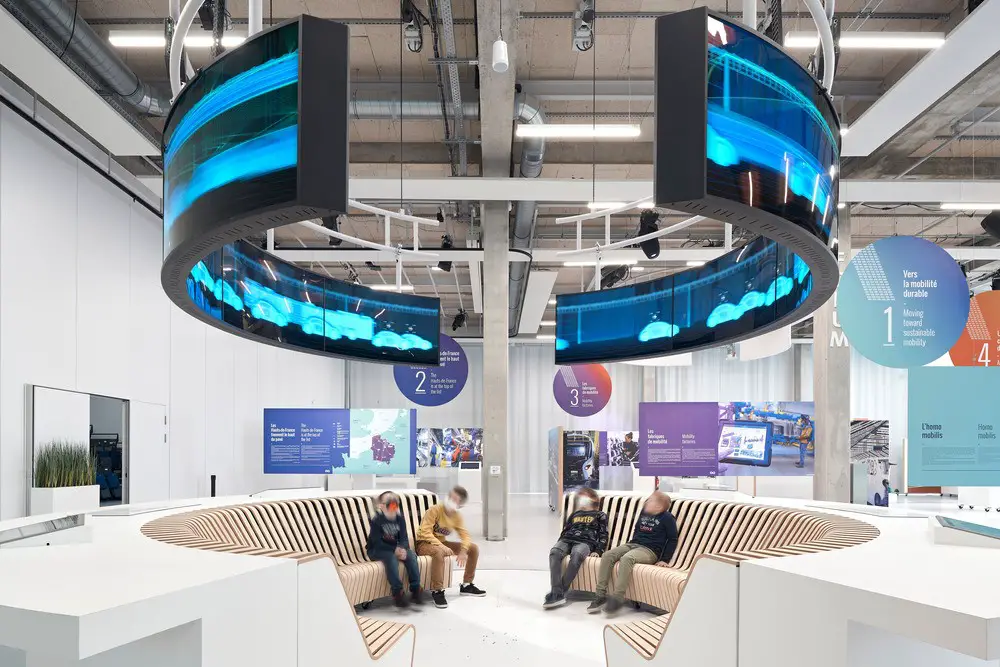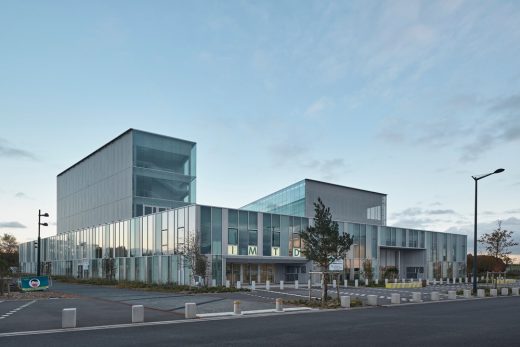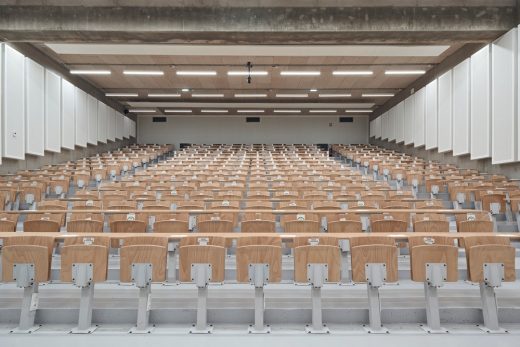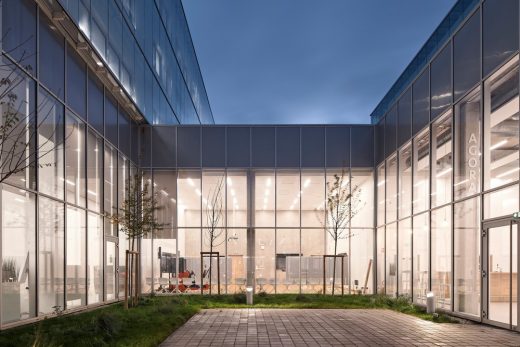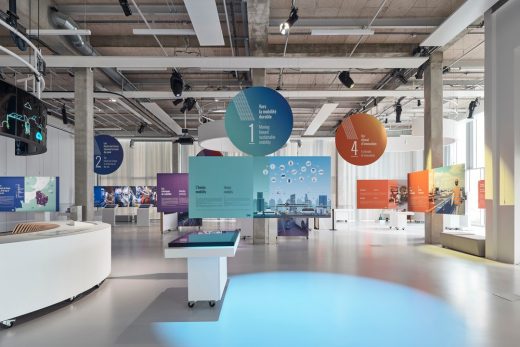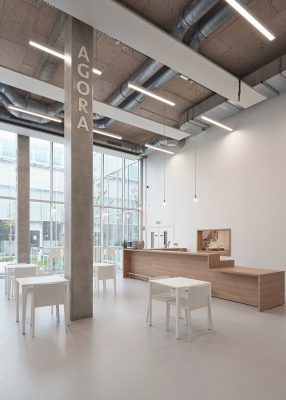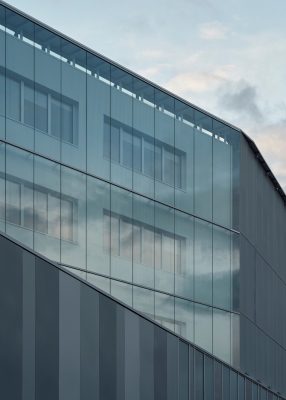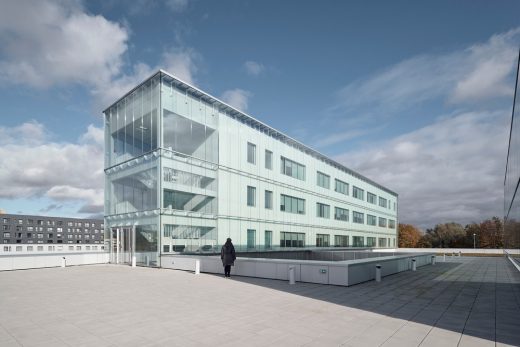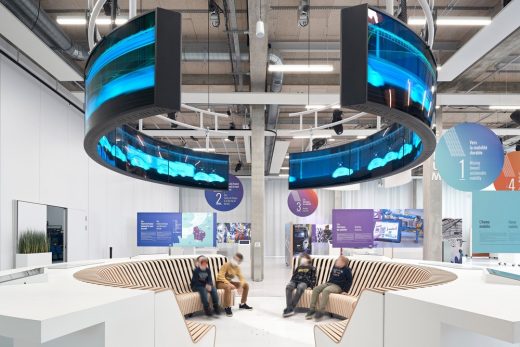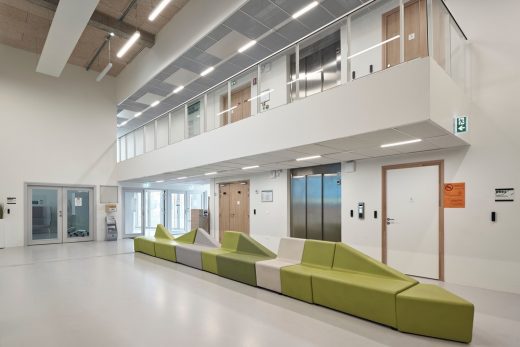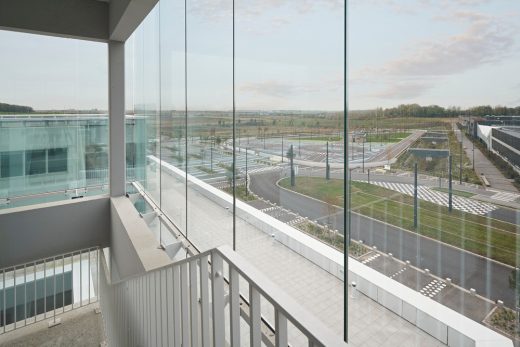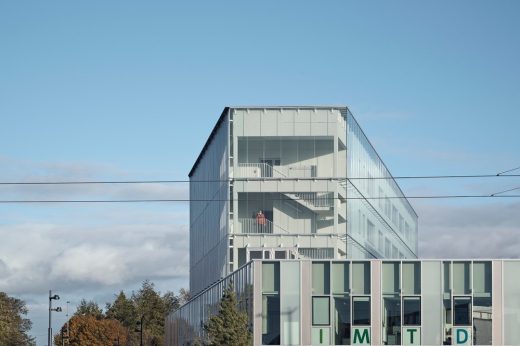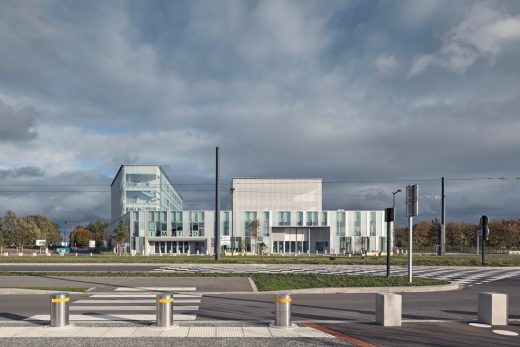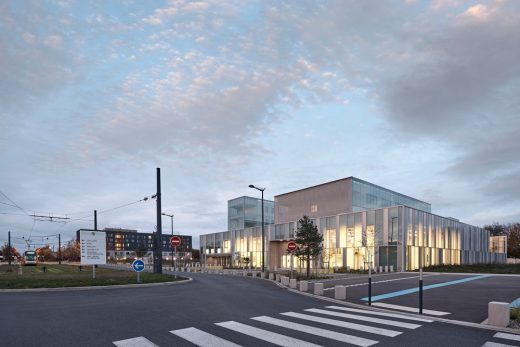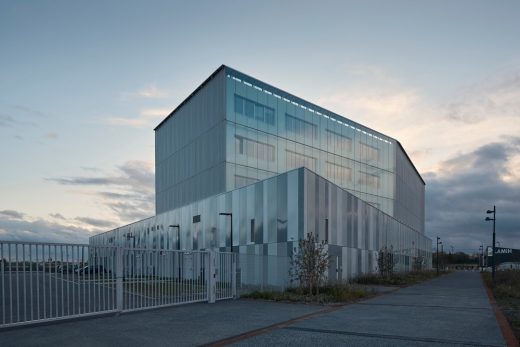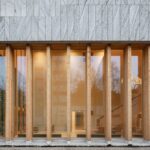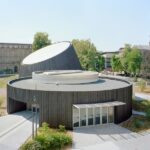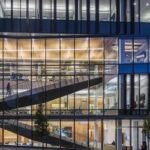Institute of Sustainable Mobility and Transport Building, Valenciennes Project, French Architecture Photos
Institute of Sustainable Mobility and Transport in Valenciennes
20 Jun 2021
Institute of Sustainable Mobility and Transport
Design: Coldefy and Relief Architecture
Location: Technopôle Transalley – Avenue Loubat, 59300 Famars / Valenciennes, France
Intended to stimulate innovation, to imagine the mobility and industry of tomorrow, the Institute of Sustainable Mobility and Transport form an ecosystem dedicated to sustainable mobility and transport. They meet the highest standards of international science parks. Located in one of the most dynamic regions in terms of automobile, rail, aeronautics, and new mobility, they are intended for students, businesses (they host an incubator and an accelerator), and also to the general public.
Architectural and urban integration aspect
On the same site, training, research, and commercial activities come together around the theme of sustainable transport. The IMTD and the IIM, which are part of the Université Polytechnique des Hauts-de-France’s Innovative Campus operation, are the nerve center of the technology park. Linked by the grand central square, which is a garden, they form a single unit. This garden, which includes a demonstration and experimentation track, creates a strong link with the IMTD exhibition spaces.
The buildings aligned like a showcase, create a continuous space. The entire site is perfectly aligned. Enveloping the building is a double-skin façade providing acoustic insulation, solar shading in summer, and thermal insulation in winter. The gable walls provide night-time illumination, transforming them into lanterns at night.
Functional organization
The various activity hubs within the base of the building are organized in such a way as to create a progression from public spaces to private spaces. Facilities open to the public face the central square. The public enters via the central exhibition space, showcasing the sustainable transport knowledge and expertise on the campus. The showroom’s glazed façade creates a connection with the exterior. The grand conference room directly adjoins the showroom. A moveable partition creates a strong symbiosis between these two areas. The stage also extends on the other side of the moveable partition, forming a platform in the exhibition space. It can be lowered into the ground to enable a vehicle or any other object to be displayed on stage from the exhibition room. The raked seating in the conference room is also retractable and can be stored along the lateral wall. These retractable features make these two areas incredibly flexible and modular: they can form a single space for a larger exhibition, and large-scale receptions can be held in this room (with the raked seating retracted).
The visual continuity offered by the patio at the end of the room offers additional breathing space bringing in natural light and the ability to use this area as an outdoor exhibition space. The control room, with the translation booths, above the seating is accessed via a circular staircase. An immersive committee room adjoins the conference room. The documentation and multimedia center can be transformed into a learning center open to the public. The double-height ceiling makes way for a two-level mezzanine offering panoramic views and different ambiances, this is where you will find the cafeteria. The entrance hall for visitors and staff links seamlessly with the central patio. The two committee rooms for consultancy and creativity sessions enjoy the wooded atmosphere of the patio; separated by a moveable partition, they can be joined to form a single room. The auditorium, which can accommodate up to 300 people, is connected directly to the entrance hall.
The two projecting volumes have been organized around the two main functional hubs:
– The teaching hub and all the various classrooms
– The office hubs made up of the ITD and IIM office hub and the teacher/Ph.D. student offices.
All of the teaching rooms are a block above the students’ entrance hall. The multimedia rooms are mainly found on the first floor, allowing the main classrooms and tutorial rooms to be grouped together and superposed. A green roof with trees provides an area for users to walk. A covered roof terrace can be used as a relaxation and entertainment area for staff. The IIM office hub is on the second floor, with the ITD hub on the last floor.
Environmental approach
The UPHF wanted the building occupied by the two institutes to be part of the Université Polytechnique Hauts-de-France’s “Sustainable Transport and Mobility” Innovative Campus Plan, notably following a High Environmental Quality approach, without however seeking to obtain certification.
The building is perfectly integrated into the site through its volumes and the choice of exterior claddings. With its double-skin façades on the two projecting volumes, it takes full advantage of free solar heating in winter and huge amounts of natural light throughout the year. It is a truly bioclimatic approach.
Landscaped areas have been created thanks to two patios in the middle of the base and the large green roof terrace. The latter provides an elevated promenade offering panoramic views over the campus and a demonstration and experimentation track. The materials used for the building’s construction and finishes have a low environmental and health impact and are almost all bio-materials and bio-sourced materials. The building aims to achieve performance levels meeting the effinergie+ label with a 10% reduction in consumption. Rainwater is collected. The operations and maintenance considerations, taken into account from the outset of the operation, determined the economic quality of the building.
Exterior materials
The bioclimatic dimension was included from the very first sketches of the architectural design in order to optimize energy consumption and to increase the occupants’ thermal comfort: the bioclimatic potential has been fully exploited with a naturally ventilated double-skin façade on all façades. This double-skin creates a protective envelope that stores heat from the sun in winter and provides natural ventilation in summer thanks to pivoting panels. The building faces south, a layout conducive to exploiting solar energy. The façades on the base meet the requirements set out in the CPAUP (architectural, urban, and landscaping specifications): a grid of 55- and 110-cm-wide modules with materials suited to the rooms’ needs: glass, frosted glass, and stainless steel.
Interior materials
Teaching/office spaces: the walls/separating partitions are in exposed concrete with wooden wall cladding inside classrooms. The ceiling is also exposed concrete with radiant panels providing heating, ventilation, and lighting. Acoustic management and the use of thermal inertia provide optimal comfort in the teaching and office hubs. The double skin and the solar chimneys enhance this performance. The offices in the office hubs are separated by wooden partitions. All indoor joinery is in wood. The doors all have a lateral fixed glazed panel. The flooring is grey PVC. The IIM meeting room has laminate flooring.
Base: the main flooring is a polished concrete slab for almost all areas open to the public. The “consultancy and creativity” committee rooms have laminate flooring. The walls are partially clad with wood for acoustic dampening. The ceiling is a metal grid allowing for easy maintenance of the technical and staging equipment.
Furniture: The furniture was partly chosen and partly custom-designed by Coldefy and Les Murs ont des Plumes.
Institute of Sustainable Mobility and Transport in Valenciennes, France – Building Information
Main Architects: Coldefy
Program: two research institutes including a scientific and multimedia exhibitions’ forum (400 people) with revolving stages for vehicles, suspended video rotunda video, 8 double-sided suspended screens, a Fablab, a physical and numeric documentary center, an auditorium with 200-seat retractable seating, translation booths, removable wall open on the forum, an agora (dining area, coffee-bar with outdoor terrace in the patio -100 people), creativity and lecture rooms split by a removable partition, an amphitheater (300 people), 10 classrooms and 5 multimedia rooms, offices.
Location: Technopôle Transalley – Avenue Loubat, 59300 Famars / Valenciennes, France
Status: delivered end of 2020
Cost: 15.5M€ including 4M€ equipment
Floor area: 5,900 sqm
Client: UPHF (Université Polytechnique Hauts-de-France)
Lead Architect: Coldefy (Project Director: Simon Ducreu, Project Manager: Katrin Bergmann)
Associate Architect: Relief Architecture
Furniture: Coldefy and Les Murs ont des Plumes
Scenographers: Les Murs ont des Plumes
Signage: Studio Briand & Berthereau
Engineering office: Projex Ingénierie
HQE engineers: Diagobat
Economist: Alteremo
Overseeing and Coordination Function: EGIS
About Coldefy
Thomas Coldefy and Isabel Van Haute are the duo of the architecture and urban planning office Coldefy founded in 1993. They joined it in 2006 and won at this moment the international competition for the Hong Kong Design Institute against 162 teams. This project is a manifesto which embodies their approach and values.
Seated in Lille, Paris, Shanghai, and Hong Kong, they develop projects at regional, national, and international levels, for public and private clients, in the domains of education, culture, sport, housing, retail, urban design.
Photos © Epaillard Machado
Institute of Sustainable Mobility and Transport in Valenciennes images / information received 200621
Location: Technopôle Transalley – Avenue Loubat, 59300 Famars / Valenciennes, France
Lille Architecture
Lille Buildings – Selection
Projet Tourcoing_siège LMH
Design: Dietmar Feichtinger Architectes
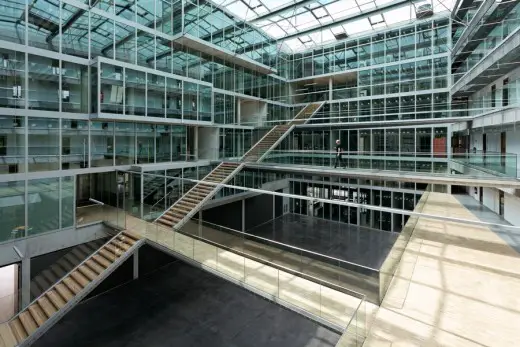
picture from architecture office
New Headquarters Lille Métropole Habitat
Euravenir Tower
Design: LAN
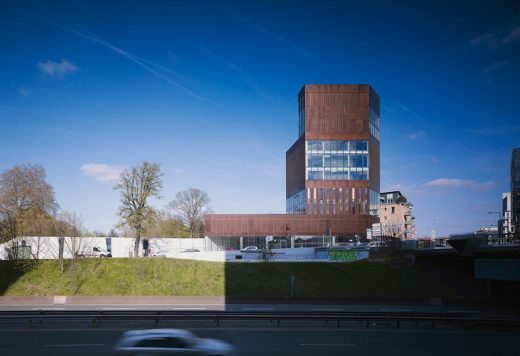
image courtesy of architects
Euravenir Tower in Lille
Pavilion, Lille Museum of Modern Art
Design: 2hD Architects
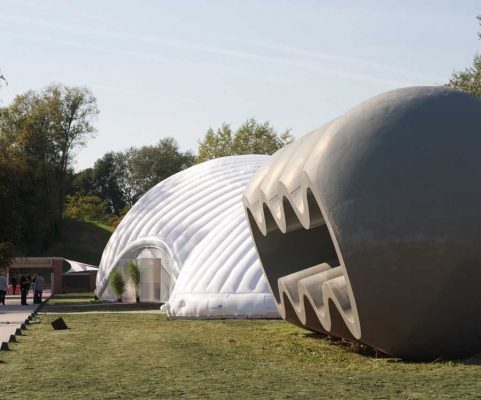
image courtesy of architects
Lille Museum of Modern Art Building
Lille Metropole museum
Design: Manuelle Gautrand
Lille Metropole museum
New Buildings in France
French Architectural Projects
French Architect Offices – design firm listings
Northern French Buildings – Selection
Grand Musée d’Art
Design: Stanton Williams Architects
Grand Musée d’Art Nantes : international design competition
Nantes Tripode
Design: Atelier d’architecture Christian de Portzamparc
Nantes Tripode
Comments / photos for the Institute of Sustainable Mobility and Transport in Valenciennes page welcome
Website: Villeneuve d’Ascq

